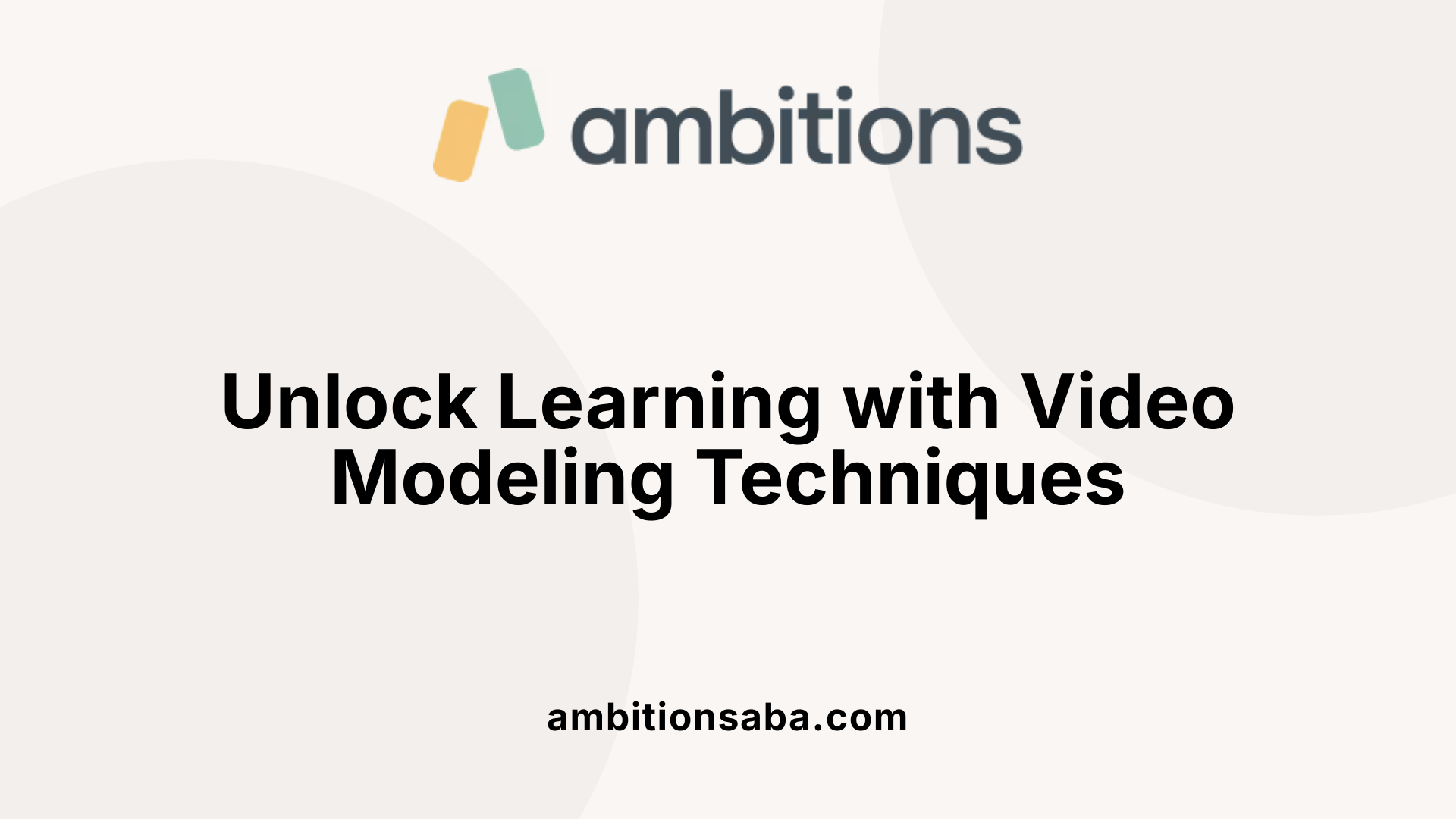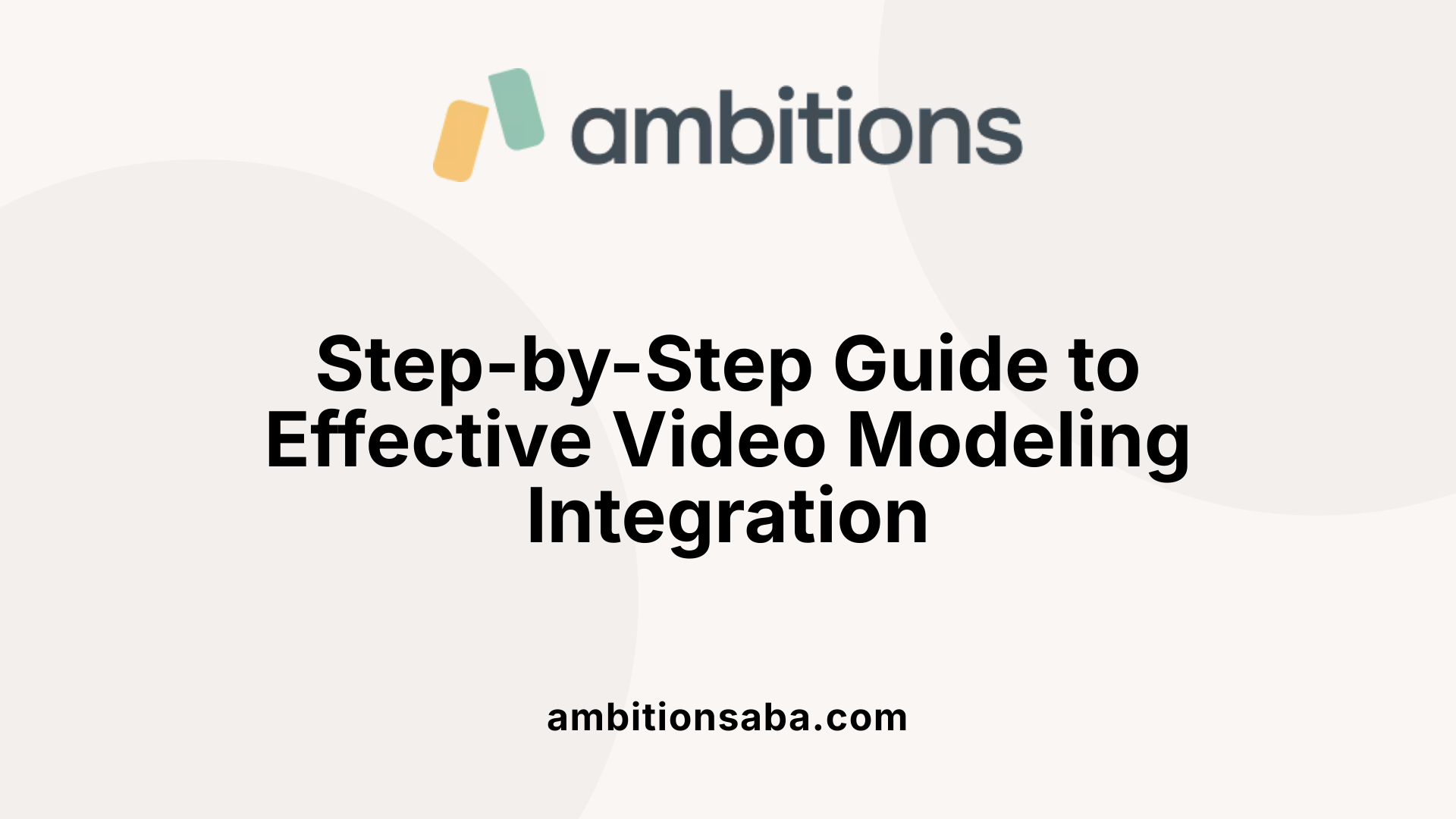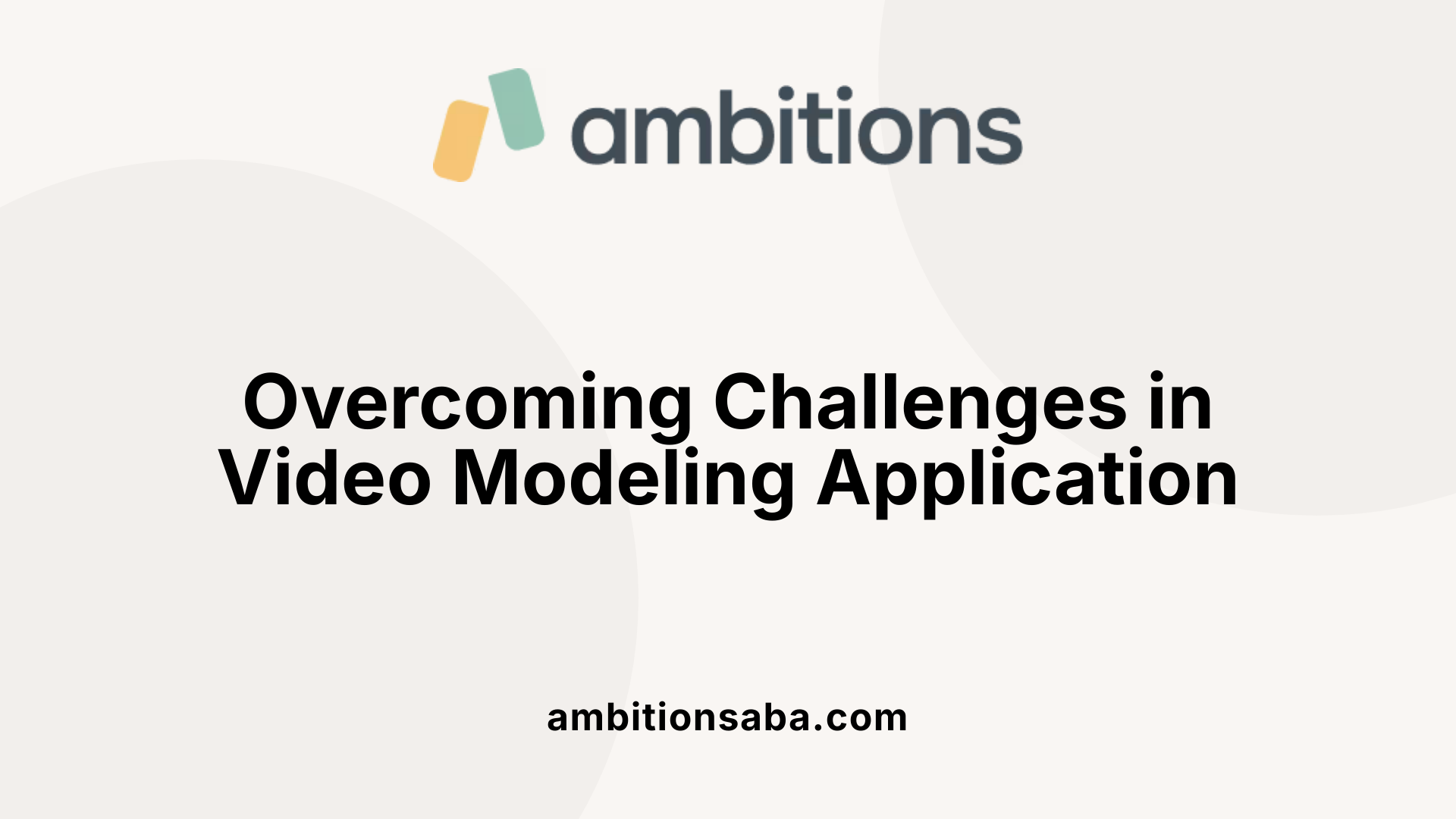Transforming Repetitive Speech into Functional Communication in Autism
Introduction to ABA Therapy and Video Modeling
Applied Behavior Analysis (ABA) therapy is a well-established, evidence-based approach used to support individuals with autism spectrum disorder (ASD) by improving social, communication, academic, and daily living skills. This article explores how integrating video modeling as part of an ABA plan can enhance learning outcomes and promote skill generalization in a cost-effective and engaging way.
Foundations of ABA Therapy and Its Benefits for Individuals with Autism

What is Applied Behavior Analysis (ABA) therapy?
Applied Behavior Analysis (ABA) therapy is a scientifically based approach that uses principles of learning and behavior to support individuals with autism and other developmental disorders. It focuses on assessing behaviors, identifying environmental triggers, and applying systematic techniques such as positive reinforcement, prompting, and task analysis to encourage positive behaviors and reduce challenging ones. ABA is highly individualized, with programs tailored to the unique needs of each person, often directed by a certified behavior analyst (BCBA).
Core ABA techniques include Discrete Trial Training (DTT), Pivotal Response Training (PRT), Functional Communication Training (FCT), naturalistic teaching, token economy systems, and antecedent interventions. The therapy is data-driven, relying on continuous data collection and progress monitoring to inform adjustments and improve outcomes. ABA interventions aim to teach essential skills in communication, social interaction, and adaptive behaviors, promoting independence and meaningful improvement.
How does ABA therapy benefit individuals with autism?
ABA therapy supports individuals with autism by improving key areas like communication, social skills, academic abilities, and daily living tasks. Its evidence-based strategies help increase helpful behaviors while reducing challenging or harmful ones, making it an effective tool for behavior modification. Early and intensive ABA therapy often leads to significant developmental gains, particularly when started before the age of six.
The flexible nature of ABA allows it to be used across various settings such as home, school, and community, ensuring skill generalization and real-world application. Families play an important role through parent training and involvement, reinforcing positive behaviors and functional communication. Ultimately, ABA enhances independence, emotional regulation, and better prepares individuals with autism for diverse life situations, improving overall quality of life.
Video Modeling: An Effective Teaching Strategy Within ABA

What is Video Modeling?
Video modeling in Applied Behavior Analysis (ABA) is a teaching approach that uses videos to show learners a clear example of a target behavior or skill. By watching these videos, learners can imitate and acquire the desired behavior more effectively.
What Are the Goals and Benefits of Video Modeling in ABA?
Video modeling aims to provide structured and understandable demonstrations that support skill acquisition. It enhances comprehension, increases learner motivation, promotes independence, and encourages the generalization of skills across different settings. Additionally, it tends to reduce learner anxiety and can be more cost-effective than some traditional ABA approaches because it requires less direct therapist involvement.
What Types of Video Modeling Are Used?
Several video modeling methods are commonly employed within ABA therapy:
- Self-Modeling: Showing videos of the learner successfully performing a skill.
- Peer Modeling: Demonstrating behaviors using peers to promote social interaction and communication.
- Point-of-View Modeling: Videos are filmed from the learner's perspective to enhance understanding.
Other types include partial modeling, group modeling, and situational modeling, each designed to meet specific learning goals.
ABA therapy itself employs diverse techniques such as positive reinforcement, discrete trial training (DTT), naturalistic teaching, prompting, chaining, and, of course, various types of modeling. These methods work together to target communication, social skills, and adaptive behaviors tailored to individual needs, often supported visually through media like videos to promote learning and generalization effectively.
Implementing Video Modeling Within ABA Plans: Steps and Best Practices

Selecting Target Behaviors
The first step in implementing video modeling is identifying specific behaviors or skills that the learner needs to acquire. These targets are chosen based on individual assessment and goals outlined in the ABA program. Selecting clear, observable, and measurable behaviors helps ensure effective teaching.
Creating Clear, Scripted Videos
Once behaviors are identified, videos are developed to demonstrate them clearly. Scripts for these videos should be concise and straightforward, focusing on showing the desired behavior without distractions. Videos may feature self-modeling, peer modeling, or adult demonstrations, depending on the learner's needs.
Integrating Video Modeling into ABA Programs
Video modeling should be blended thoughtfully into existing ABA interventions. Therapists introduce these videos as part of sessions, followed by practice opportunities where learners receive reinforcement for imitating skills shown on screen. This integration supports motivation and helps generalize learning.
Task Analysis and Probes
Before video viewing, a task analysis breaks the target behavior into manageable steps to facilitate easier learning and performance monitoring. Probes assess the learner's baseline abilities regarding the skill, allowing customization of video content and instructional strategies. Ongoing data collection guides modifications to video modeling use and ABA plan adjustments.
By following these structured steps and focusing on clarity and data-driven decisions, video modeling can effectively complement ABA plans, enhancing skill acquisition and promoting meaningful progress.
Varieties of Video Modeling Techniques and Their Applications
What are the Different Types of Video Modeling in ABA?
Video modeling in ABA therapy uses videos to help individuals learn desired skills by watching demonstrations. There are several types of video modeling techniques, each tailored to different learning needs and goals.
Self-Modeling
Self-modeling involves the learner watching videos of themselves performing the target behavior or skill. This method can boost confidence and promote independence by showing what the learner can do.
Peer Modeling
Peer modeling leverages videos of peers engaging in social communication or other behaviors. By observing a peer, the learner is encouraged to imitate those skills, especially useful for promoting social interactions.
Point-of-View Modeling
Point-of-view (POV) modeling shows the task from the learner's perspective, offering a first-person view of how to complete an activity. This supports learners in understanding step-by-step processes more clearly.
Other Specialized Modeling Types
- Live Modeling: A therapist or caregiver demonstrates behaviors in person, such as greeting others.
- Group Modeling: Utilized for teaching social norms and cooperative play through structured group activities.
- Situational Modeling: Prepares learners for real-life social situations by showing appropriate responses.
- Role Modeling: Focuses on emotional regulation strategies like managing frustration.
- Direct Instruction Modeling: Supports academic skills with demonstrations and verbal explanations.
- Partial Modeling: Demonstrates parts of tasks to encourage independent completion.
Each modeling type offers unique advantages depending on the targeted behaviors and settings, making video modeling a versatile and effective teaching strategy within ABA therapy.
Challenges and Considerations When Using Video Modeling in ABA

How Can Video Modeling Be Adapted for Different Learning Styles?
Video modeling is versatile but must be tailored to fit individual learning preferences. Some learners may respond better to self-modeling, where they watch videos of themselves performing a task. Others might benefit more from peer modeling, observing a peer, or point-of-view modeling that shows the task from the learner's perspective. Adapting the content, pace, and complexity of videos helps accommodate diverse cognitive abilities and attention spans.
What Are the Challenges in Ensuring Skill Generalization from Video to Real Life?
A major consideration is that skills acquired through video modeling should transfer to real-world settings. Without proper support, learners may perform well while watching videos but struggle to apply behaviors spontaneously. To address this, practitioners incorporate practice sessions, reinforcement, and naturalistic teaching methods along with video modeling. Gradual exposure to multiple environments and stimuli also supports skill generalization.
What Technical Issues Can Arise and How Can They Be Resolved?
Technical barriers include equipment malfunctions, video quality issues, and accessibility challenges. Poor video clarity or sound can hinder understanding. To mitigate these issues, high-quality recording devices and editing tools are recommended. Videos should be clear, concise, and engaging. Regular equipment maintenance and backup plans ensure sessions proceed smoothly. Additionally, selecting user-friendly platforms facilitates ease of use for both therapists and learners.
Measuring Progress and Ensuring Effectiveness of Video Modeling Interventions
How is progress measured during ABA therapy?
Progress in ABA therapy is systematically tracked through continuous data collection on targeted behaviors and skills. Therapists record objective measures such as frequency, duration, and quality of behaviors demonstrated by learners. This ongoing measurement enables precise monitoring of whether goals—often defined using the SMART (Specific, Measurable, Achievable, Relevant, Time-bound) framework—are being met.
Data collection in ABA
Within video modeling interventions, data collection includes evaluating how learners imitate behaviors shown in videos and their ability to generalize these skills across different environments. Baseline assessments, or probes, are conducted before intervention to understand the learner's initial skill level. Following video sessions, practice opportunities are provided, and therapists measure responses with reinforcement strategies. Detailed records of these responses help identify improvements or areas requiring further support.
Monitoring skill acquisition
Monitoring the gradual acquisition of new skills is critical in video modeling. Therapists analyze trends in behavior frequency and independence, noting how often behaviors are correctly executed after viewing videos. Regular progress reports and observational notes highlight whether learners are internalizing and applying modeled behaviors without prompts.
Using progress data for adjustments and decision-making
Collected data informs the adjustment of video content, teaching approaches, and reinforcement schedules to better suit the learner's needs. If progress plateaus or declines, the therapy team revises goals or introduces supplementary supports. Moreover, data-driven decisions ensure interventions remain individualized, promoting functional independence and meaningful outcomes.
By integrating thorough data collection and continuous progress monitoring, video modeling in ABA maintains its effectiveness and maximizes benefits for individuals with autism spectrum disorder.
The Future of Video Modeling in ABA: Emerging Technologies and Innovations

How Might Virtual Reality (VR) and Augmented Reality (AR) Enhance Video Modeling?
Virtual Reality (VR) and Augmented Reality (AR) represent promising frontiers in the evolution of video modeling within ABA therapy. These technologies can immerse learners in controlled, yet realistic and interactive environments where target behaviors and skills are demonstrated. Unlike traditional video modeling reliant on 2D screens, VR and AR can simulate complex social situations or daily living tasks, offering experiential learning opportunities that are more engaging and contextually rich. This high level of immersion can help learners better generalize new skills to real-world settings.
What Is the Role of Artificial Intelligence (AI) in Advancing Video Modeling?
Artificial Intelligence (AI) can further personalize video modeling interventions by analyzing individual learner responses and progress through data collection. AI algorithms could adapt video content dynamically, selecting or modifying video segments to cater to a learner's specific needs and pace. This adaptive approach ensures that interventions remain optimally challenging and effective. Furthermore, AI-driven analytics can assist therapists by highlighting patterns in skill acquisition and suggesting evidence-based adjustments to intervention plans.
How Do These Innovations Foster Personalized and Interactive Interventions?
By integrating VR, AR, and AI technologies, video modeling in ABA therapy is moving toward highly personalized and interactive experiences. These innovations allow for customized scenarios that reflect the learner’s everyday environments and socially relevant situations. Interaction within these digital environments encourages active participation rather than passive viewing, which can enhance motivation and engagement. Personalized feedback and tailored prompts, possibly mediated by AI, further support the learner’s progress and independence.
Together, these emerging technologies hold the potential to revolutionize video modeling, making it a more immersive, adaptable, and impactful tool in ABA therapy.
Conclusion: Integrating Video Modeling to Maximize ABA Therapy Outcomes
Video modeling represents a powerful and versatile teaching strategy when integrated into Applied Behavior Analysis programs for individuals with autism. It complements traditional ABA techniques by providing clear, structured visual examples that can enhance understanding, motivation, and independence. While challenges like ensuring generalization and addressing diverse learning styles exist, ongoing data collection and progress monitoring support effective adaptation. Looking ahead, technological advancements such as virtual and augmented reality and AI promise to make video modeling even more personalized and engaging. Overall, video modeling exemplifies the evolving landscape of ABA therapy, striving to deliver measurable improvements in skill acquisition and quality of life for learners.
References
- ABA Video Modeling: Revolutionizing Autism Therapy in ...
- Essential ABA Therapy Techniques for Parents and ...
- How to Use Video Modeling for Transformative Teaching in ...
- Discover 8 Examples of Modeling in ABA Therapy
- Applied Behavior Analysis (ABA)
- Applied Behavior Analysis (ABA)
- 6 Benefits of ABA Therapy for Children with Autism
- ABA Techniques: Strategies for Behavior Analysts - GSEP Blog

